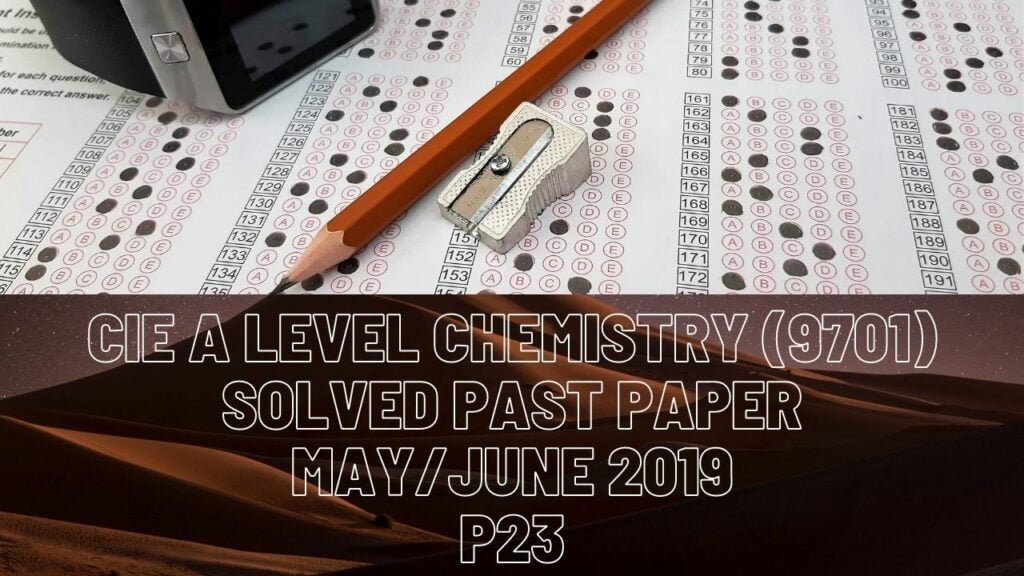
CIE A Level Chemistry (9701) Solved Past Paper May/June 2019 P23
1 ai) atomic number=number of protons & atomic mass=number of neutrons+number of protons
b) For all those atoms which have got isotopes, their relative atomic mass=((1st isotopic mass*its % abundance)+(2nd isotopic mass*its % abundance))/100
ci) The order of the orbital energy levels, from least to greatest is as follows: 1s2,2s2,2p6,3s2,3p6,4s2,3d10,4p6,5s2,4d10…
iii) Sulphur-1s2,2s2,2p6,3s2,3p4
Removal of electrons starts from the outermost shell or with the highest energy level so 3p is the orbital from which Sulphur’s first electron is removed.
di) I will first completely fill 3s orbital, then half fill each box of 3p orbital and at the last give pairs to each box of 3p orbital depending upon the availability of electrons.
ii) Although the rule is that ionisation energies increase along any period however Sulphur (1s2,2s2,2p6,3s2,3p4) has its 1st ionisation energy lower than that of Phosphorus (1s2,2s2,2p6,3s2,3p3). The reason is that 3p sub-shell has 3 orbitals, each can take in 2 electrons and Sulphur has one of its orbital having a complete pair of electrons. When electrons are in pairs, they don’t need that much of energy to separate that electron from the pair because of repulsion they are experiencing against each other due to like charges.
2 aii) Iodine molecule has covalent bonding & temporary induced dipoles but NOT permanent induced dipoles because both Iodine atoms have same electronegativity.
3a) Group II oxides are white in colour and produce flame when react with oxygen.
4a) Fossil fuels contain Sulphur and when the fuel is burnt, that means Sulphur reacting with oxygen which forms SO2
bii) When fuels burn in power stations, that produces a lot of energy which is enough to break the bonds of nitrogen in the air, which then reacts with oxygen in the air forming NO2.
5 ai) KCN with ethanol is a reagent which replaces halogen from the structure with :CN- ion.
ci) (CH3)3CI is the most reactive (takes least time) because of the greater bond length as compared to the other two. The greater the bond length, the easier it is to break those bonds.
ii) SN1 mechanism involves intermediate product which has to be very stable (a tertiary carbocation is the most stable intermediate product due to positive inductive effect of 3 alkyl groups). Since all 3 structures form tertiary halogenoalkane, they all favour SN1 mechanism.
6 aii) CO2 is released when one side of C=C has 2 Hydrogen atoms attached. Carboxylic acid (-COOH) is produced if one side of C=C is attached to 1 Hydrogen atom and 1 alkyl group. Ketone (-C=O) is produced when one side of C=C has 2 alkyl groups attached to that side. When this reaction takes place, if 2 products form this means both the sides of C=C has different atoms or group of atoms attached.
biii) To distinguish between alcohol types, potassium dichromate (VI) solution+dilute H2SO4 can be used. If secondary alcohol is present, solution turns green from orange and ketone forms: If primary alcohol is present, solution turns green from orange forming aldehyde and that further oxidizes to carboxylic acid. This reagent can’t indicate presence of tertiary alcohols as solution remains orange upon its addition.